Direct Response Copywriting Guide 2024
Written by David L Hicks – December 2nd, 2024
One of the most important aspects of any business is connecting with its customer base. Communicating with customers can lead to sales and, eventually, profit. Connecting with both new and pre-existing customers can take time and effort. With so much content out there, separating from the pack takes a lot of work. Connecting with customers is even more challenging today, especially with the increased use and reliance on technology (e.g., mobile phones).
To get readers’ attention, you’ll have to create eye-popping, engaging content that keeps them engaged and wants them to buy what you are selling immediately. Direct response copywriting will help entice potential customers to read your content and take action upon completing it. Whether we realize it or not, people see copywriting ads everywhere. They can appear in commercials, blogs, landing pages, sales pages, newspapers, and magazines.
In this article, you will learn what direct response copywriting is, how you can use it, direct response copywriting examples, tips, strategies, and tools you can leverage to get better.
Table of Contents
ToggleWhat is Direct Response Copywriting?
Direct response copywriting is a form of writing that inspires and drives customers to make a purchase within a specific period. The period in which direct response copywriting focuses on immediacy. It is versatile and can come in both a short-form and long-form copy. It creates content that entices customers to buy your product or service immediately.
Direct response copywriting can appear in magazine ads, newspaper ads, blogs, and television commercials, among other places. It can be developed by an individual or with additional team members.
Direct response copywriting can also drive customers to make other essential actions such as:
- Subscribe to the website’s email newsletter.
- Download free materials such as how-to guides and product or service offerings.
What Does a Direct Response Copywriter Do?
A direct response copywriter generally works in their organization’s marketing, advertising, and sales departments or can work freelance. They are responsible for creating and developing sales copies to get readers to respond and persuade people to buy the product or service they are selling. Your direct response copy or sales copy can appear on a sales page, ad, landing page, or blog, among many other places.
To craft excellent content that entices readers to purchase, direct response copywriters must first understand their industry and customers’ pain points. Copywriters must understand how the products and solutions they recommend will solve the customer’s problem. They must also understand how to write in order to evoke a positive response from the customer (I.E., make a purchase or inquire about a product or service). Being able to perform this action continuously will allow you to earn the trust of your customers, which in turn will help drive sales. The more people that trust you, the more authority you will gain.
Direct response copywriting has become a prevalent form of marketing and email marketing. The principal use of direct response copywriting is primarily due to past major successes of many individuals, including David Ogilvy, Robert Collier, Eugene Schwartz, David Abbott, and Alex Osborn. David Ogilvy, in particular, has been deemed by many as the Godfather of direct response copywriting. During the 1950s and 1960s, he created many famous ads for organizations such as American Express (AMEX), Rolls Royce, Shell, Dove, and Schweppes.
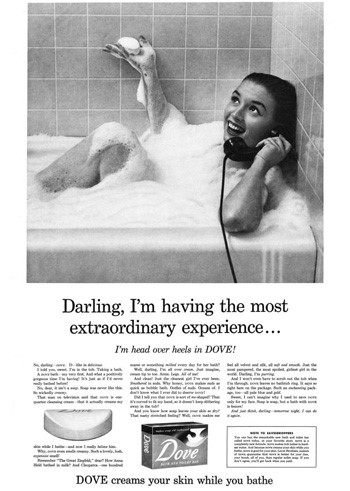
(Source – randallreilly.com)
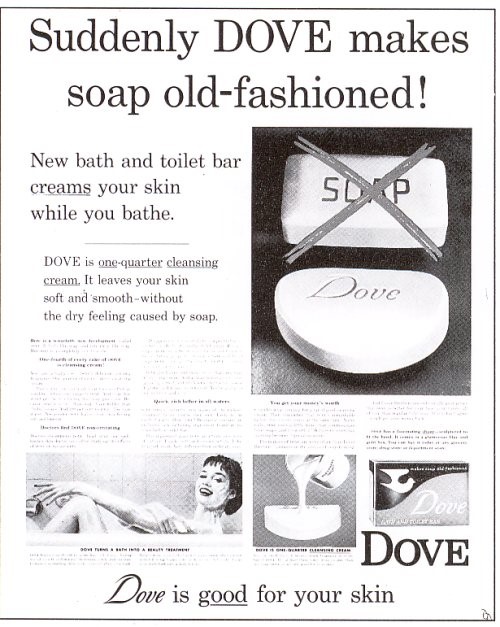
(Source – Navay Maynard – Medium.com)
As shown above, David’s Dove ads perfectly display the power of direct response copywriting at work. In many ways, his Dove ad put the organization on the map. As you can see, David focused on what the soap consisted of by mentioning that the soap is 25% cream. He focuses more on how the soap can moisturize and clean the skin. In contrast, other soaps contain oils that strip moisture in skin and hair.
The copies are excellent because they presented the soap from a different angle. If David had mentioned that Dove cleans hands like the rest of the soap companies, we would not be talking about it today, especially as one of the top soap brands in the world.
By leaning into what makes their product unique (being 25% cream), it was able to stand out from the rest. What also makes the copy excellent is that David manages to spark a personal connection and drive immediacy in his prospective customers. You want to buy this soap because it moisturizes skin instead of drying them out.
Direct response copywriting is a very intimate and personal form of writing that connects so much with people. In contrast to direct response copywriting, indirect response copywriting focuses on having customers make purchases over time. Although the two forms of copywriting have different approaches, they both have the same intent: to create content that makes someone want to take action.
Direct Response Copywriting vs. Indirect Response Copywriting
As stated in the previous section, direct response copywriting focuses on immediacy (the here and now). The direct response copy wants the customer to purchase after they read the copy or watch an ad. Indirect copywriting doesn’t focus on the here and now. It’s more focused on building its brand. The more awareness built over time, the more potential sales they can take.
With indirect response copywriting, customers can wait to make purchases and make purchases at their leisure or when the time is right. Indirect response copywriting is frequently more subtle in its communication approach. Its content mainly focuses on building brands and customer relationships over time.
Great examples of this include insurance companies like Geico and Farmers. Their commercials are very clever and often funny, making them memorable to those watching television. The expectation is to get their insurance when you are ready. You will not immediately change car insurance carriers, but you will when the time comes.
Also, think about commercials such as Pepsi and Coca-Cola; they weren’t designed to entice you enough to go out and buy soda. When you are out and already shopping, they want you to make your purchase. Pepsi and Coca-Cola are big brands cultivated over time with many forms of indirect copywriting.
Strategies and Tips to Create An Excellent Direct Response Copy
Now that we have set the groundwork for understanding direct response copywriting, we can learn and implement strategies and tips to create great content. Many of the best copywriters use these strategies and tips to succeed when developing their content.
It is also important to note that you can also use these to help evaluate the copies of others, especially if you have outsourced the copywriting task to a vendor.
Know and Understand your Market
Understanding your market is essential in the copywriting process. With industry knowledge, you will correctly identify your customers’ wants, needs, and pain points, which will, unfortunately, fail to build a connection with them. Direct response copywriters must understand their customer base and the product they are writing for.
It is challenging to write about what you don’t know. You don’t necessarily have to be an expert but must have some overall knowledge base. Remember that direct response copywriting can be a weapon in any marketer or copywriter’s toolbox when leveraged correctly.
There are many ways you can learn about your industry of interest; among them are noted below:
Find reliable industry blogs and read articles (Online or Physical).
There are plenty of great blogs that you can follow and learn a great deal about your industry. The key is finding them. My approach would be to leverage Google and try to find which blogs answer crucial questions about your industry. See what blogs come from your search results, and begin reading from there. The more you read and learn about your industry, the more A valuable non-industry-specific website I recommend is LinkedIn. I found an excellent blog post/article on Linkedin; the site is also great for networking in your industry.
When reviewing industry blogs, also look at how blogs sell products on their websites. Pay close attention to a website’s landing page. A landing page is a separate webpage on your website created for marketing and advertising a specific product or service. In addition to landing pages, sales pages are great. Sales pages cover both physical and electronic mediums. They can appear on websites, newspapers, and magazines.
A landing page and a sales page, although both seek to gain a lead’s attention and convert them to customers, have different focuses. A sales page sells the product/service on the page, while the landing page captures information (generally names and email addresses) of leads.
Find industry forums
Industry forums will give you great insights into popular and new products and current and emerging trends. You will gain a more robust understanding of your target audience and their pain points directly from those in the industry. You can find industry forums using Google, Bing, and other search terms.
- Enter “keyword” + “forum” or Enter “keyword” + “forums“
- Enter “keyword forum”
- Enter “keyword” + “board”
- Enter “keyword” + “message board”
Once you find a forum, note how it is categorized into sections. These are potential keywords you can add to your list.
Find Question and Answer (Q&A) Forums
Leveraging Q&A forums, you can search for answers to specific questions about anything in your industry. Here are a couple of popular Q&A forums for you to get started.
- Quora
- Yahoo Answers
- StackExchange
- Askville
- Mahalo
- Answerbag
- BlurtIt.com
- The Answer Bank
- All Experts
- Formspring
- Answerbag.com
- Answers.com
- StackOverflow
Subscribe to an industry magazine (physical or digital)
Most industries have many publications that cover them. Try going to your local bookstore, like Barnes and Noble, and going to the magazine section. There are digital magazines out there as well. Digital magazines could be similar to those pointed out when finding blogs. I recommend Zinio, as it has over 6,000 potential digital magazines under its umbrella that you can select.
Subscribe to newsletters
Many prominent blogs and online magazines covering your industry have a subscriber list. Once you sign up, you will receive periodic newsletters covering various topics, such as industry updates, new products/services, and important events.
Find an internship/entry-level job for a company
There is arguably no better way to learn about the industry you want to know about than by joining it. Perhaps you are:
- A recent high school or college graduate.
- Looking to change careers.
- You want to learn something new and different.
Try leveraging sites like those listed below to find and apply for jobs in your industry.
Find a mentor
If you want to work in the industry or learn about it to grow your blog, it is always great to find a mentor. Focus on someone knowledgeable in the industry and willing to guide you in your journey.
Purchase industry products
Learning about the products and services you want to cover is essential. Buying a product is a great way to understand it. You can use and test them. Personal use is generally the best way to connect with your readers because you have the product and can give a more detailed review. It is also easier to gain trust because you have the product and have used it.
Important note: This process can be costly. Proceed with caution on this particular strategy.
Research industry products
As stated above, owning and using a product is more helpful when writing about it; however, as previously stated, it can be costly for you. For those who can’t afford the products or don’t have the time to try them all out, you can always research them. Try reading about the product directly from the company’s website. Generally, the company’s website has a great deal of information about the product, including the following:
· Price – Cost of the product
· Product Attributes/Specs – Size and appearance of the product.
· Functions – What does the product do?
It is essential to know that you can also gain insight into products through researching product review sites. Many sites give you the products’ good, bad, and ugly. Websites can provide additional details, sometimes not provided by the product’s company website. Video channel sites such as YouTube can also be helpful because you can view the product via video.
Attend a conference
Conferences are a great way to learn about your industry’s major events. You can find information about conferences on industry websites, blogs, and forums.
Performing many of the tasks noted above has helped me learn more about the topics covered in this blog. These can also help you. Over time, performing these actions will help you understand the industries you find interesting.
Incorporate The A.I.D.C.A. Framework to Improve Your Copy
It is crucial to include the A.I.D.C.A. framework model in your writing. A.I.D.C.A. stands for the following:
Attention (could also mean Attract)
Interest
Desire
Conviction
Action
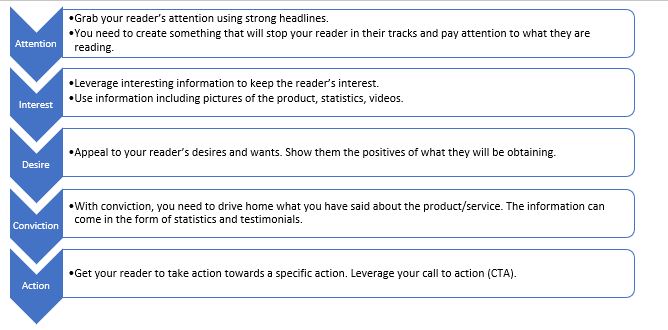
1. Attention/Attract – Responsible for grabbing the reader’s attention. Generally, this comes as an attention-grabbing headline or picture that will catch their eye. Headlines are the first thing a person sees before viewing your work. You must make it attention-grabbing yet honest. Boring headlines are something direct response copywriters should steer clear of.
A headline should be:
- Clear
- Concise
- Eye-catching
2. Interest – Interest is arguably the most challenging part of the A.I.D.C.A. model. Now that you have the reader’s attention, you must keep it. Keep your readers interested by providing valuable and relevant content that relates to them. Think of interest like a fishing reel; your headline is the hook. Valuable direct response copy should be enticing, engaging, and helpful.
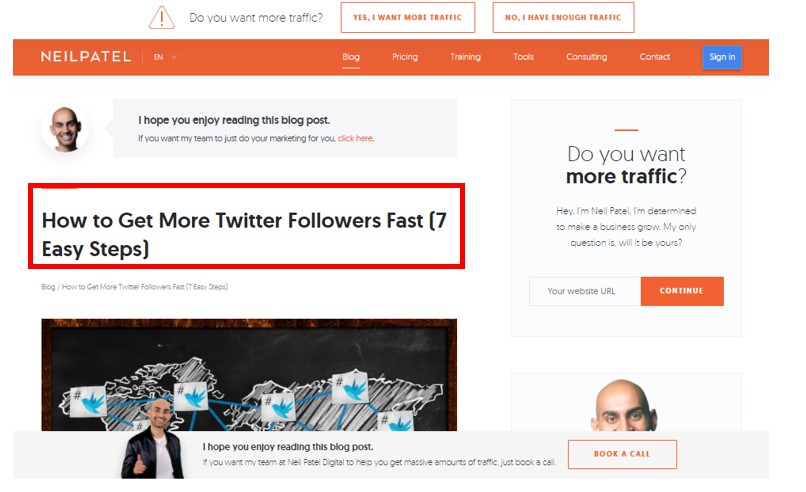
(Source – NeilPatel.Com)
Your headline has them on the hook, and you now have to reel them in. You’ll have to develop engaging content and speak directly to them. Information can come in the form of (but not exclusive to) product pictures, statistics, specs, and videos. Use storytelling as a way of showing what you went through. Overall, your direct response copy should be engaging and insightful.
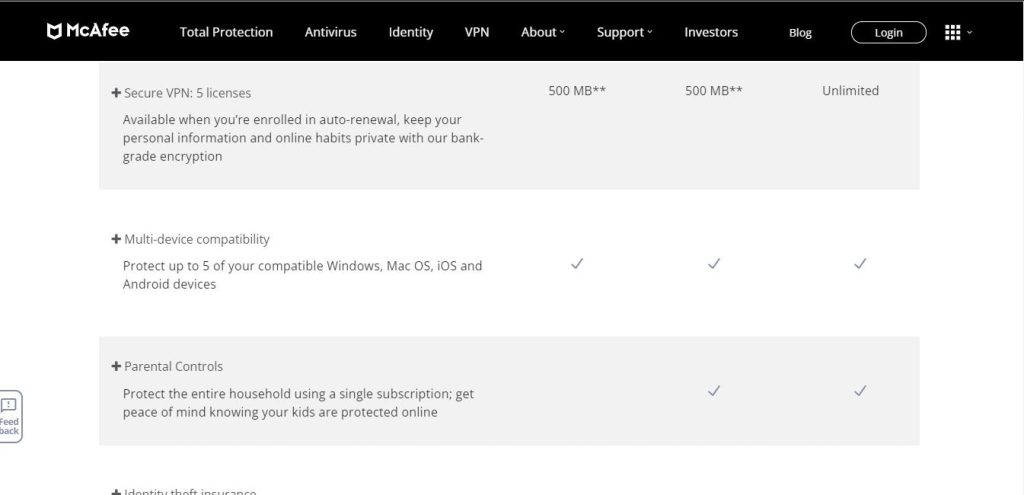
(Source – mcafee.com)
3. Desire – Here is where knowing the customer truly helps you. You will talk about how the product can help them. You must tell the customer what they can gain by using the product/service you cover. See examples below:
- Diet Program – You will lose 5 pounds in 14 days.
- Time Management App – You will save time throughout your day and get more tasks completed.
- Finance System – You will retire within five years by a system.
- Professional Certification Training Program – 99 percent passing rate through a training program.
Describe how a product or service can help the customer or lead understand the value added. Essentially, you want to convey a value proposition that explains why a person should purchase your product or service. Giving your target audience a value proposition makes them more likely to buy the product.
Some examples shown above are generally personal to the people buying them. No matter the reasons, things like weight loss and personal finances are more likely to cause a person to buy the service or product that promises to help them. Many potential customers value an individual approach when they are viewing or watching an ad. People buy things that are inherently personal to them.
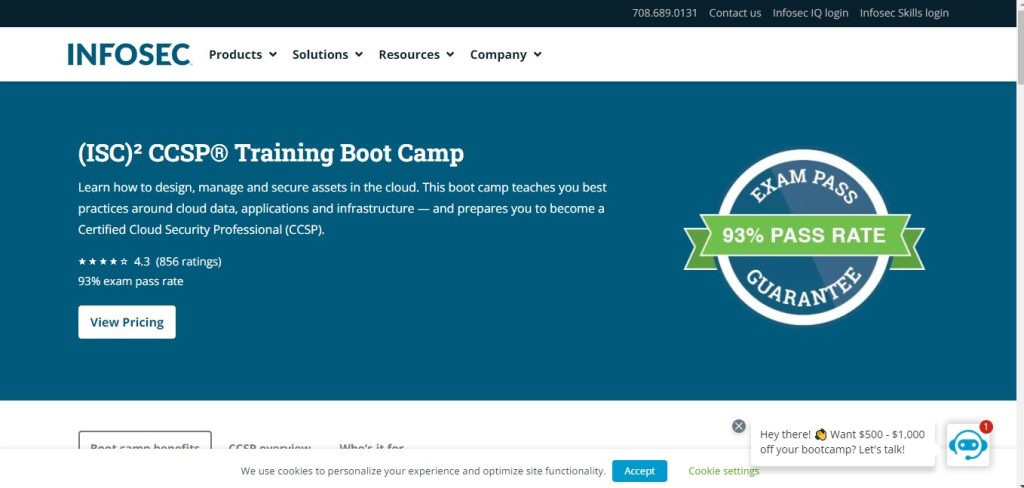
(Source – infosecinstitute)
4. Conviction – With conviction, you need to drive home what you said about the product/service. The information can come in the form of statistics and positive testimonials from those who have used it. Below is an example:
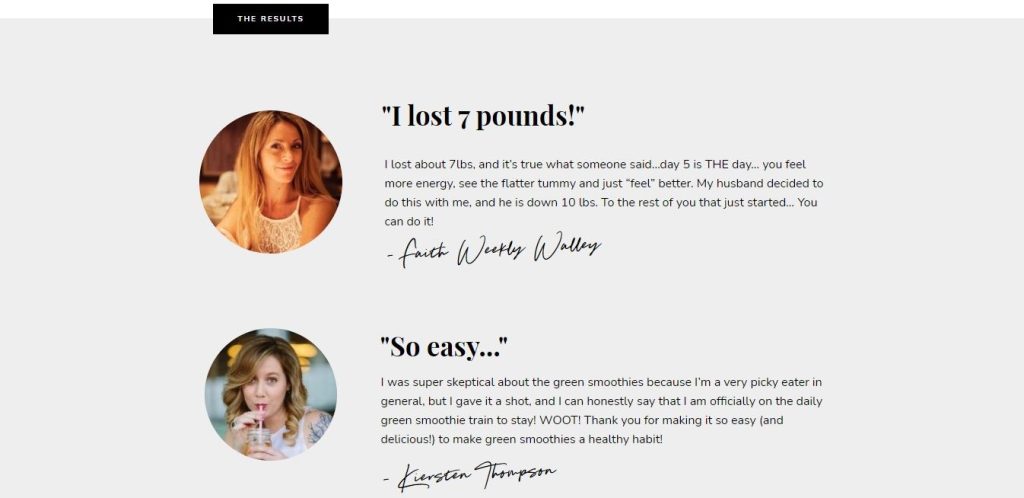
(Source – simplegreensmoothies.com)
5. Action – This is where you close your copy by instructing your reader on what to do next. A call to action is content used in marketing, including images, text, graphics, and buttons, to prompt users to perform a specific task. An effective C.T.A. will prompt an immediate response from your lead to buy or at least inquire about your product or service.
Without a C.T.A., your reader could read your page without performing any of the desired tasks, and as a result, you won’t have any of the outcomes you wanted. Your direct response copy can sway a person to buy the product.
Example 1 – Free product offering
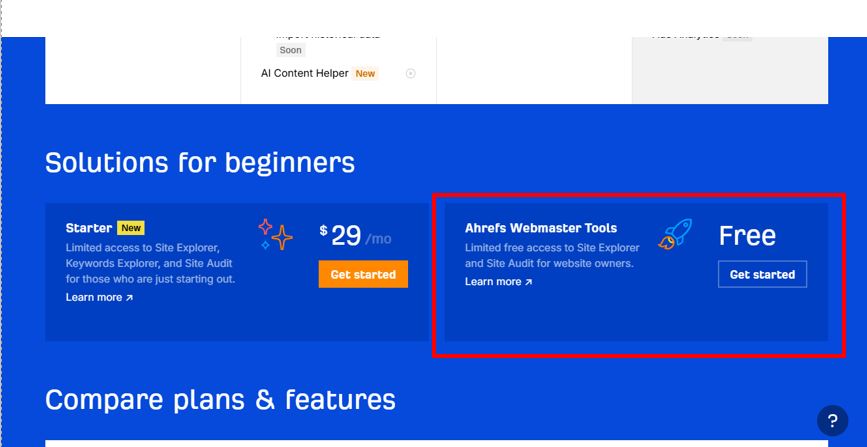
(Source – Ahrefs.com)
Example 2 – View service offerings/features
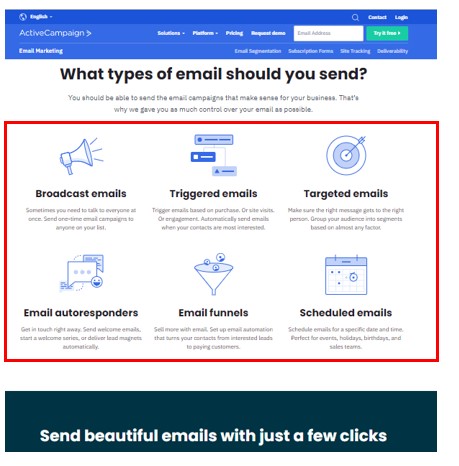
(Source – activecampaign.com)
Edit Your Copy
Editing is a significant foundation of writing. All great writers either edit their work themselves or have a professional do it for them. You want to eliminate unnecessary information and have a clear and concise message, especially with direct response copywriting.
If you are unable to hire an editor, here are a couple of tips that can help you be a better writer:
· Read slowly and carefully
· Read aloud
· Read and revise your work multiple times
· Check for the following common errors:
- Proper names
- Header/footer material
- Fonts
- Citations
- Punctuation
- Page numbers
· Use a writing aid such as Grammarly or the Hemmingway App
· Have a friend, a family member, or a co-worker read your work and provide constructive criticism/feedback
· Create a list of errors you commonly make and keep an eye out for them as you write your copy.
· Proofread for only one type of error at a time.
· Concentrate. Get rid of noise and other distractions. You will catch more errors if you are focused.
You should edit your paper in a different session than the one you wrote. Leave the document for a while, even a few days, and return to it. This approach will give you fresh eyes and catch more errors.
If you can hire an editor, here are some places to find them. Before deciding on an editor, it is essential to research them. Where possible, review customer feedback ratings, generally on the website where they offer services. Cost is another crucial attribute you must keep in mind. You can also ask if you can see a sample of their work before and after.
Create Great Headlines
It’s no secret that headlines are the driving force that leads readers to your content. The purpose of a great headline is to entice and inspire your readers to want to read your work. Without attention-grabbing headlines, your content is unlikely to be read.
“On the average, five times as many people read the headline as they read the body copy. When you have written your headline, you have spent eighty cents out of your dollar”. – David Ogilvy
Here is an excellent example of a great headline.

(Source – fool.com)
Motley Fool is a private financial and investment advisory company. The company provides advice via its website, books, podcasts, and premium investing services. As you can see, Motley Fool’s headline is well done. With this headline, you know exactly what to expect. They are telling you that investing in 2 stocks will produce ten times your returns, which is enough to make anyone stop and read the article. The word unstoppable is also great, which implies the two stocks will be an automatic success.
Important Note – Be honest in your writing. If what you say doesn’t help your customers, they will likely lose trust in you.
Develop Long-Form Content
Over time, the popularity and interest in long-form content have grown. Many people today now prefer longer-form content to shorter-form content. Long-form content is a preference for a couple of different reasons.
· Provides you with an opportunity to offer additional details about your product/service. Further information can include other facts, testimonials, and specs.
· This allows you to give readers a chance to become more interested in the product/service as they read your content.
· Long-form content shows your level of research and expertise.
· Longer content can boost SEO.
· Increase the number of social shares
Readers deem longer-form content more trustworthy, especially if they read about particular products/services they are interested in buying. According to an analysis by Backlinko, long-form content gets an average of 77.2% more links than short articles. From a marketing standpoint, long-form blog posts generate 7x more leads than short-form blog posts.
Search engines have also come around to favoring longer-form content. Among the search engines, Google tends to reward long-form content: On average, articles on the first page of Google results pages contain 1,890 words.
Important Note – Long-form content can include (but is not exclusive to) copies, blog posts, and articles.
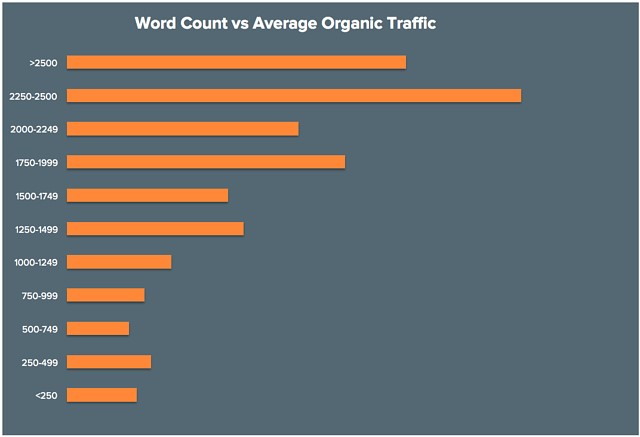
(Source – hubspot.com)
Focus on the Customer
The customer is paramount to your business, whether obtaining or retaining them. Every successful direct copy speaks to the customer by zeroing in on their pain points and showing how a product/service can help their situation.
Direct response copywriting isn’t general. It’s specific to the person who reads the copy. As previously stated, the path to being a great copywriter is knowing your industry/industries and your customers.
Develop a Strong Call to Action (C.T.A.)
A call to action is required for anyone who wants their copy to be worth anything. As previously stated, without a call to action, the reader won’t do what you want them to do. Your direct response copy is only as persuasive as the strength of your C.T.A.
Below is an example of a C.T.A.
Example – Quick Sprout
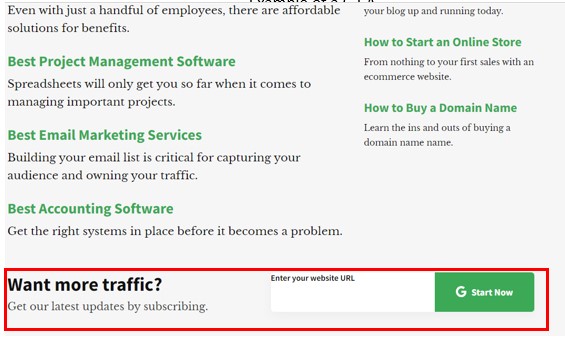
(Source – QuickSprout.com)
To improve your C.T.A.s, you must test them. Testing your C.T.A.s is essential because it will help you determine the best C.T.A. for your copy/content.
If you have multiple C.T.A.s and want to narrow them down to a single copy, you can leverage split testing (A/B Testing). Split testing is a great way to test various C.T.A.s to determine which one to use. You will select the C.T.A. that performs the best over a predetermined period.
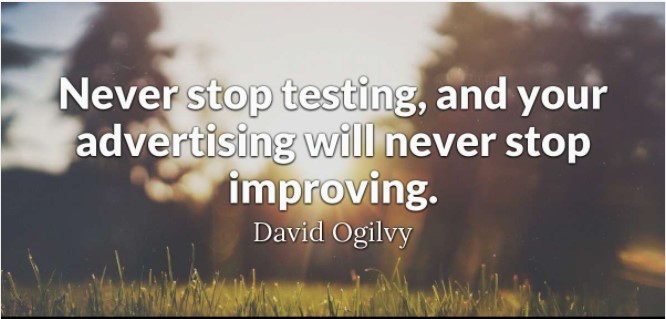
(Source – brainyquote.com)
Implement The K.I.S.S. Approach (Keep It Simple Stupid)
Most readers don’t care about how smart you are or how many big words you know. Keeping your copy/content simple with shorter sentences, paragraphs, lists, and bullets will help your readers focus on content. Being clear and concise without excess wording is the best way to develop content that appeals to a broader audience. Being too wordy can overcomplicate things and turn a read-off pretty quickly.
Tools like Grammarly and the Hemmingway app can help you align your sentences, structure, focus, and readability with the preferred writing best practices.
Sense Of Urgency
While developing a copy or a piece of sales content, you want to convey a sense of urgency to your audience. As someone reads your copy, you want the intrigue and urge to take action to build. Once they have finished reading your content, they are ready to buy or inquire about the product/service. This fact is accurate for impulse buyers (buyers who make purchases without planning to do so).
There are a couple of different phrases that you can use to trigger a sense of urgency in your potential customers. Here are a couple of direct response copywriting examples you can leverage:
- Limited time offer
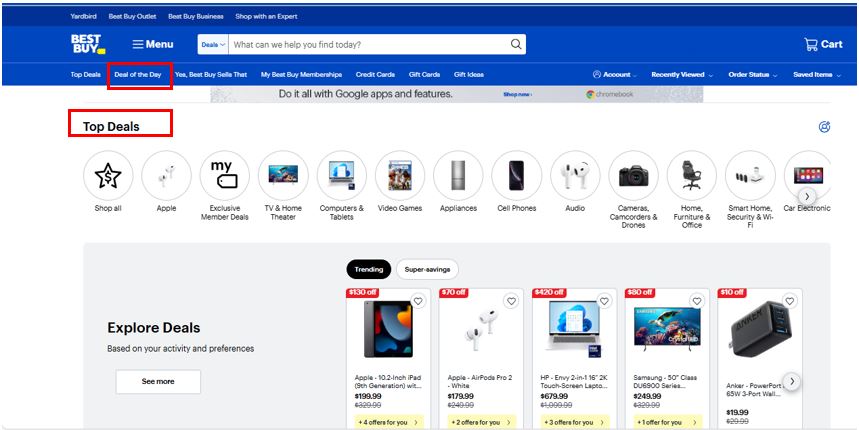
(Source – Best Buy)
- A limited number of the item remaining

(Source – booking.com)
- Buy one, get one free or buy one, get one at a discounted rate
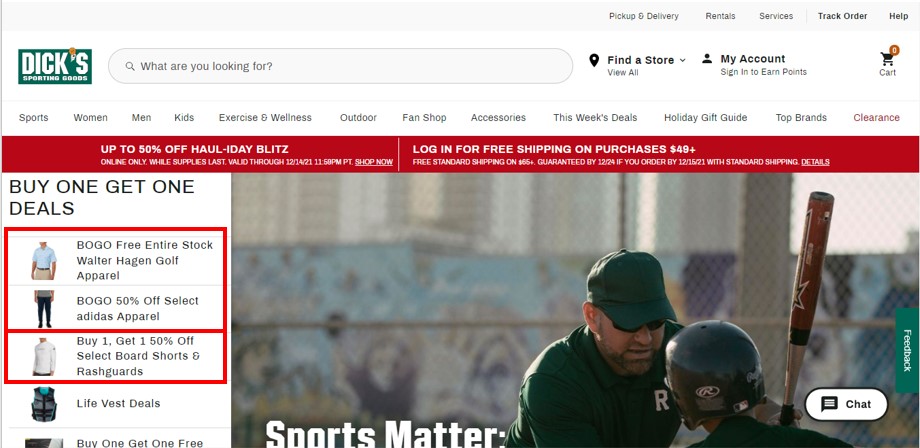
(Source – Dicks Sporting Goods)
A critical aspect of urgency is honesty about what you’re trying to convey to your readers. If you only have a limited number or if it’s a limited time, that’s great, but if every product you recommend or sell has a limited-time offer, your customers will grow weary of this and not purchase from you.
A strong C.T.A. goes hand in hand with your sense of urgency. Your call to action should close the deal after the prospective customers read your copy.
Test your content
In the same fashion as testing your C.T.A., you should test your copy/content. You need to test your content to better understand how good it currently is and how much better it can be. Split testing (A/B testing) is a great way to see what aspects of your copy work and what don’t. As you learn what works, you can lean into those aspects, and for the elements that don’t work, you can eliminate them.
Over time, the document you developed will become optimized and lead to more success for you than a static document. You can also apply this tactic to blogging.
Testing can also be used as an aspect of editing. Your copy’s second and third iterations should be better than your first. Your next couple of iterations are better because, over time, you will make the necessary changes accordingly as you analyze what works and what doesn’t.
Bloggers use this popular content method because they are generally known for updating their content and optimizing it over time. Whether it’s their high-performing or lowest-performing content, try reviewing your copy/content at least once a quarter or every six months. You can do it sooner if you have enough of a reader base that reads your content and takes action.
Writing Improvement Exercises and Strategies
If you ever want to be good at anything, you know it takes hard work, discipline, and dedication. With that hard work, you want to incorporate exercises and strategies to help you achieve your goals. Here are some great exercises to get you started.
Write Everyday

(Source – brainyquote.com)
Repetition is essential to learning and improving upon a task or goal you set out to accomplish. Think about shooting a basketball or driving a car. Executing the same action every day gives you a higher chance of improving; this is no different from writing. Setting up a schedule is an excellent way to get in the groove of writing every day. I write daily from 5:00 AM to 6:00 AM and 10:00 PM to 11:00 PM. This schedule allows me to see growth in my writing and complete my weekly writing goals. It also doesn’t get in the way of my full-time job or my family responsibilities.
Without that time allocated to writing, it would be easy to procrastinate or lose sight of completing my tasks. It would be best if you treated writing as you do a job. Setting a schedule is an excellent way to get in the groove of writing every day. Whether you can allocate 30 minutes or 5 hours, scheduling and staying on that schedule will help you improve growth, speed, and productivity in the long run.
Study your Inspirations
Finding motivation is a great way not only to start writing but also to help you stay writing. A strong motivator is to find inspiration.
Inspirations could come from other writers, books, blogs, and magazines. Whatever inspires you, it’s always great to study it and understand it. You can do that by asking yourself some of the following questions:
· Why do you like reading it?
· How does it make you feel reading it?
· Does it inspire you to take action with your goals?
Many writers try to pattern themselves around the writers that inspire them.
Competitive Analysis
Learning about your competitors and what they do is essential to any business that wants to succeed. Competitive analysis is researching and assessing your competitors’ strengths and weaknesses. You want to be able to gain insight into what they do and how they do it; this, in turn, will help determine the following:
- Determine strategies and approaches you may wish to adopt (Example – Create a template/outline before writing content.)
- Determine methods and processes you may want to stay away from (Example – Don’t include bullets and statistics in your content.)
- Determine how to differentiate yourself from your competitors (Example – Implement more pictures and statistics in your content.)
Implement more pictures and statistics in your content.)
There are several different ways to study your competitors. Competitive analysis via keyword research tools like Ahrefs, Moz Keyword Explorer, and Semrush can help.
A keyword research tool is an analysis program that allows you to research important aspects of a company’s website and blog. The analysis tools provide you the ability to analyze information such as the following:
- SEO – Search Engine Optimization
- Keywords – Specific word that describes your written content.
- Page Ranking – Ranking of your website page against other website pages online.
- Overall website Ranking – Ranking of your website against other websites online
- Content Caps – Content not covered under your website is part of your focus/subject.
- Content Ranking – Ranking of content topics against others online.
- List of Websites in Industry
- Trending statistics -Important and emerging statistics about a particular topic.
Keyword research tools also allow you to analyze content topics your competitor has created and is ranking in. You can also gauge the other competitors in your industry. Tools like these are becoming increasingly popular.
Visit Competitor Website and Research Their Content
Assessing a competitor’s website content is a great way to understand why they are successful in some areas and not in others.
Ask yourself these questions while analyzing a competitor’s content:
- What is the word count?
- What is the average word length?
- How is it formatted? (Example – Use of bullets, short sentences, pictures, and video?)
- What keywords are not being used by the competitor?
- What can you add to your document that they have not?
- How can I set myself apart in a positive way?
Subscribe to Competitor Email List
Subscribing to a competitor’s email list will give you a better understanding of your competitor’s communication process. You’ll be able to review various aspects of their outreach content, which includes:
- Welcome Email
- Newsletters
- Product Sales Approach
- Landing Pages
- Email Frequency (How frequently do they send email)
- Message Type (Are they newsletters, simple email messages videos, etc.)
- Offers
- Length of email messages
The key to competitive analysis is learning from those around you and improving yourself over time. Adopting some of your competitor’s techniques can put you on the right track to do so.
Read Aloud
Reading your article aloud will help you catch punctuation, grammar, and sentence structure mistakes.
Eliminate Distractions
One of the biggest (if not the biggest) obstacles to a writer’s success is distractions. In this day and age, distractions are becoming more prevalent due to mobile devices such as phones. Mobile devices come with many features, most of which can cause a lot of distractions, such as texting, videos, and games.
Distractions can quickly hinder your growth as a writer. It is always easier to lose momentum than gain it because you are doing something else or something in the background is taking your attention away.
I know it’s easy to say, “Answering this text will only take a second.” However, each time you do that, you’ll have to stop and reassess where you are and restart. You have already lost momentum at that point, and it will take much longer to find your groove again.
Discipline is an essential attribute in eliminating distractions. I recommend the following:
Shut your cell phone off (or at least silence it)
I know entirely shutting off your cell phone is challenging, so I recommend performing whatever tasks you need to accomplish before shutting it off (e.g., texting someone or finishing reading an article). That way, you feel you won’t miss anything before or while writing.
Set up an early or late writing appointment in your schedule
Like all critical daily tasks, most of them require a schedule. Daily tasks are crucial to families, careers, and other competing responsibilities. Implementing a scheduled early morning or late evening writing session while your family is asleep can help you complete your daily writing task. It will limit the noise and potential interactions outside of writing. Eliminating distractions can also help with writer’s block.
Build An Outline/Template
Being able to have a guide that tells you where to go next with your content can have the following benefits:
- Increased writing speed
- Diminishes writers’ block
- Increases productivity
- Increases writing confidence
Most successful writers use a template, whether it be for copywriting, blog posts, articles, fiction/non-fiction novels, or other forms of written content. Creating and implementing a template into your writing process takes much of the guesswork out of writing, which will benefit you in the long run. There are many great templates that you can leverage for those who want to avoid building a template for themselves. A quick Google or Bing search will give you some excellent samples to leverage. For starters, try Optinmonster’s copywriting templates.
Conclusion
It is brilliant for marketers to leverage direct response copywriting as part of their overall sales and marketing strategy. Although challenging, once learned, direct response copywriting will help drive sales. It takes time to develop and improve upon the various direct response copywriting techniques they employ.
When used correctly, direct response copywriting can increase customers, drive readership, increase product/service interest, and improve sales. A direct response copywriter can be a valuable member of any team.
With the strategies and tips shown here today, you can leverage direct response copywriting to increase your customer base and improve sales.
After finishing the article, what strategies and tips do you plan to implement? If you apply them after reading this article, let me know which has worked and which hasn’t. It is vital to keep moving forward even if you are still waiting to see the results early on.
Please comment below and let me know your thoughts or questions. All feedback is welcome and appreciated.
Thank you for reading.